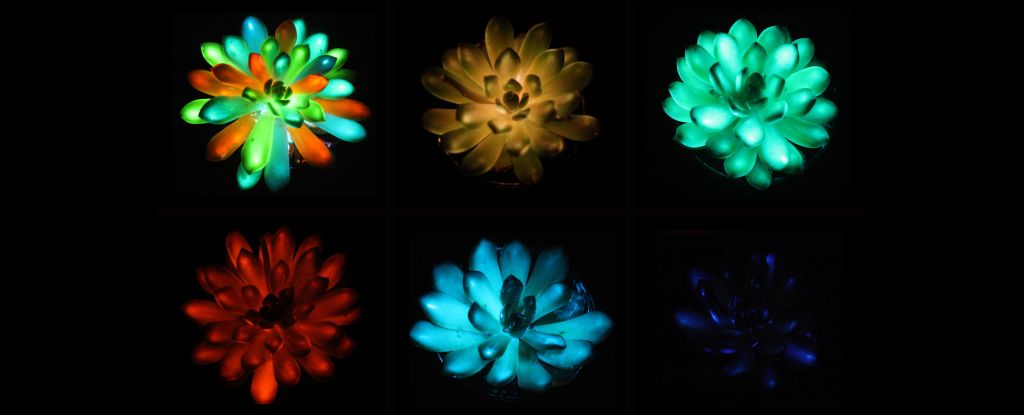
A research team at South China Agricultural University has successfully engineered succulents that glow in the dark, bringing a new dimension to indoor gardening. This groundbreaking development allows these plants to emit light through a process that can be recharged using sunlight. The glowing succulents are capable of producing multiple colors, creating a vibrant display that could transform home and garden aesthetics.
The innovative research, led by biologist Shuting Liu, aims to mimic the enchanting visuals from the film Avatar, where luminous plants illuminate their surroundings. Liu envisions a future where these glowing plants could serve as eco-friendly alternatives to traditional streetlights. “Imagine glowing trees replacing streetlights,” Liu states, highlighting the potential for sustainable lighting solutions.
The glow of these succulents, however, is not permanent. Each leaf requires separate treatment, and the luminescence lasts for approximately two hours after being charged. This duration is comparable to the glow produced by many novelty items, such as glow-in-the-dark toys and stickers. The research team is now focusing on enhancing the longevity of the glow.
To achieve this, Liu and her colleagues utilized afterglow phosphor particles, similar to those found in glow-in-the-dark products. The team’s experiments involved various plant types, including golden pothos and bok choy, in order to determine the optimal conditions for particle absorption. They discovered that particles measuring 7 micrometers in diameter—a size comparable to human red blood cells—were most effective in creating a uniform glow. Surprisingly, the densely tissued succulents delivered the strongest luminescence, defying initial expectations that airier plant structures would perform better.
“The particles diffused in just seconds, and the entire succulent leaf glowed,” Liu remarked, emphasizing the unexpected success of their approach. With initial tests demonstrating a spectrum of colors including red, green, violet, and blue, there is potential for these plants to provide enough illumination for reading in dark environments.
The findings from this research have been published in the journal Matter, marking a significant step towards integrating artificial materials with natural plant structures. Liu expressed her fascination with the seamless combination of human-made particles and biological processes, stating, “It creates a special kind of functionality.”
As the team continues to refine their techniques, the prospect of glowing succulents could soon become a reality, offering a low-cost, solar-powered lighting option that not only beautifies spaces but also reduces reliance on conventional energy sources. The journey to bring this vision to life is just beginning, yet the implications for sustainable design and ecological innovation are profound.







